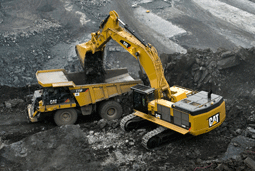The global construction equipment market is likely to increase from $143.6 billion in 2012 to $192.3 billion by 2017, growing at a CAGR of 6 per cent from 2012 to 2017. The earthmoving equipment segment is in a commanding position having contributed about 43 per cent to the total construction equipment market revenue in 2012. These were the key findings of a new market report published by Transparency Market Research titled ‘Construction Equipment Market – Global and China Forecast, Market Share, Size, Growth and Industry Analysis, 2011-2017.’
The earthmoving and construction equipment market is driven by factors such as growth in construction and mining activities, emergence of lease-based equipment and increasing government investment in infrastructure development, especially in developing countries like China, India and Brazil. In addition, demand by companies in infrastructure and real estate is also supporting the growth of the construction equipment market.
As A.M. Muralidharan, President, Volvo Construction Equipment India, noted: “Some factors that are currently driving the demand for construction equipment in India include heavy investment in various infrastructural projects by public and private enterprises in areas like road construction and maintenance, ports, power plants, telecommunication sector, urban infrastructural developments etc.”

According to the report, the construction equipment industry worldwide experienced a steep decline in its market size after 2008 as a result of global economic downturn. The declining trend in the global markets for this equipment continued to prevail in 2009 and 2010 even. “However, now this market has slowly started to reshape its size and is getting aligned to its expected growth rate, with the construction industry on boom, especially in the Asia-Pacific region where the market for the equipment offers a huge potential to be unleashed,” the report noted.
In US, the growth of the construction equipment market is primarily driven by increasing numbers of residential construction projects and non-residential works such as repair and new construction of highways, bridges and other public works. In fact, China is emerging as the largest market for new equipment globally followed by North America.
Globally, the ECE companies are again in an investment mode with several world-class product launches in different geographies. Apart from the convention product-based strategies followed by the manufacturers in this industry, the R&D activities have now started to account for a significant share of investments by a company. With the advancement of the technology leading to the introduction of highly efficient machines, the competition in this market has reached altogether a different mode and level. To cope with this paradigm shift in the market dynamics globally, the industry is seen to be moving towards a further degree of consolidation through a number of mergers and acquisitions, the report stated.
| Key Points | |
| * Brazil continues to be very attractive due to large investment in infrastructure, economic growth and political stability.* China and India are healthy growing markets, primarily dominated by joint ventures; however, scope for new market entrants is still available.
* Africa and Middle East are also very promising for construction equipment companies with various construction OEMs about to enter these markets. * Increasing competition is leading to market consolidation. Recent mergers between Caterpillar (Bucyrus) and Terex (Demag) exemplify the ongoing industry consolidation. * In the overall construction equipment, excavators and wheel loaders are the leading product segments with backhoe loaders catching up. * Competitive analysis shows that companies are mainly focusing on quality, price and replacement parts availability to gain competitive advantage. |
|
| Market Challenges | |
| * Emissions regulations* Competition from emerging market players.
* Import restrictions, especially in developing economies such as Brazil, China and India. |
|











